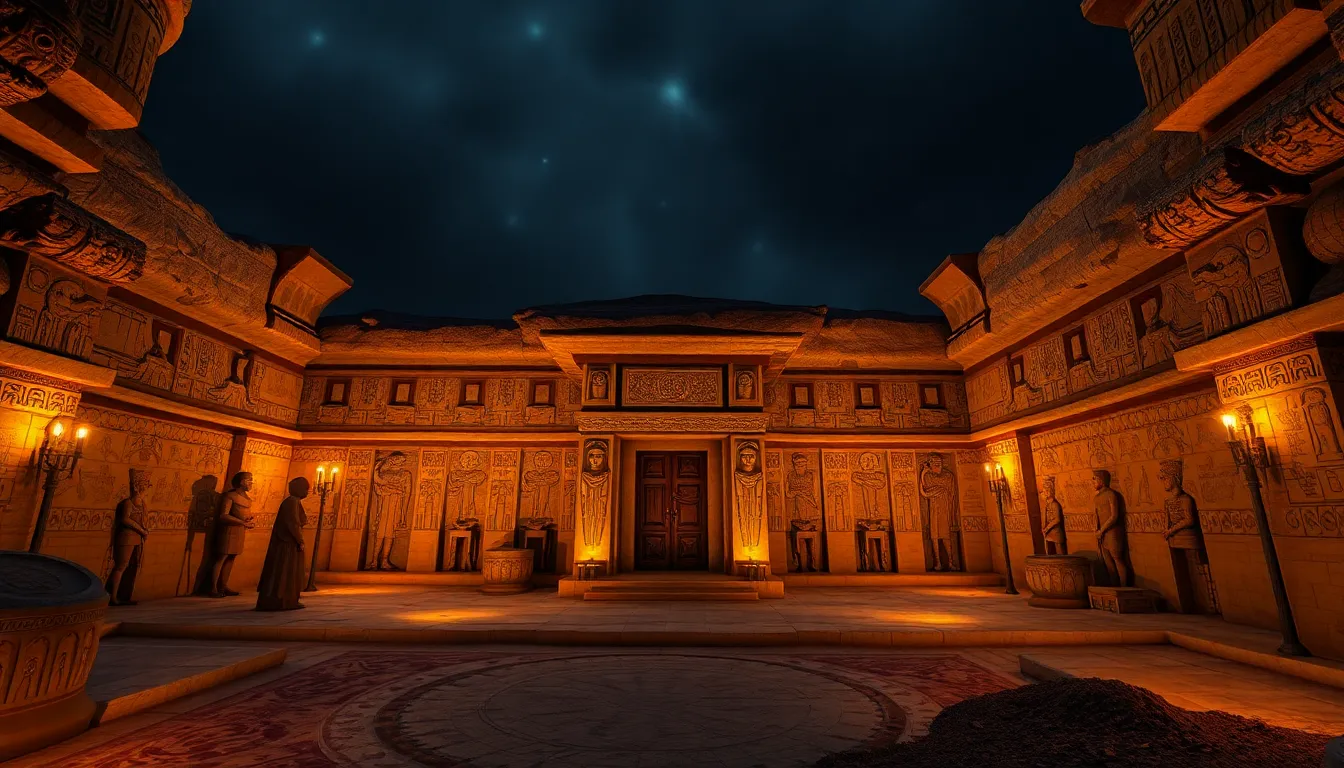The Tomb of Aset: Royal Burials Beyond the Pharaohs
I. Introduction
Ancient Egyptian burial practices are renowned for their complexity and significance, reflecting the society’s beliefs in the afterlife and the importance of the deceased. Among the myriad of tombs scattered across the Egyptian landscape, the Tomb of Aset stands out as a remarkable site that sheds light on royal burials beyond the traditional focus on the pharaohs. This article aims to explore the historical context, discovery, architectural features, burial practices, and the legacy of Aset’s tomb, offering insights into the role of women in ancient Egyptian royalty.
II. Historical Background of Aset
Aset, commonly known as Isis in Greek, is one of the most prominent deities in ancient Egyptian mythology. She is revered as the goddess of magic, motherhood, and fertility, playing a crucial role in various myths, particularly in the story of Osiris. Aset’s significance extends beyond mythology; she was also a vital figure in the royal lineage and governance of ancient Egypt.
Historically, Aset lived during a transformative period of Egyptian history, likely during the Middle Kingdom or the New Kingdom. Her reign is characterized by significant cultural and political developments, and her tomb serves as a testament to her influence.
III. The Discovery of the Tomb of Aset
The Tomb of Aset was discovered in the early 21st century by a team of archaeologists led by Dr. Sarah El-Sayed. The excavation took place in the Valley of the Queens, an area known for its royal burials. The discovery was remarkable due to the tomb’s pristine condition and the artifacts found within.
- Key Figures: Dr. Sarah El-Sayed, lead archaeologist
- Date of Discovery: 2021
- Significant Findings: Elaborate burial goods, inscriptions, and murals
The initial reactions to the find were met with excitement in the archaeological community. The historical significance of the Tomb of Aset lies not only in its contents but also in its ability to reshape our understanding of royal female figures in ancient Egypt.
IV. Architectural Features of the Tomb
The architectural layout of the Tomb of Aset is a blend of traditional Egyptian design and unique elements that distinguish it from other royal tombs. The tomb features:
- Chamber Layout: A main burial chamber, surrounded by smaller rooms for offerings
- Design Elements: Intricate carvings and colorful frescoes depicting Aset’s life and mythological significance
The artistic representations within the tomb provide valuable insights into the beliefs and customs of the time, showcasing a vibrant narrative of Aset’s role as a goddess and a royal figure. When compared to other royal tombs, Aset’s tomb offers a unique perspective on the intersection of divinity and royalty.
V. Burial Practices and Rituals Associated with Aset
Burial practices in ancient Egypt were deeply spiritual and laden with symbolism. The Tomb of Aset contains a wealth of burial goods and offerings, which include:
- Jewelry: Adornments that symbolize wealth and status
- Food and Drink: Offerings intended for Aset’s journey in the afterlife
- Statues: Representations of deities and protective figures
Rituals performed during the burial process were designed to ensure a safe passage to the afterlife. These rituals included:
- The Opening of the Mouth Ceremony: A ritual to restore the deceased’s senses
- Invocation of the Gods: Prayers and offerings to deities for protection and guidance
The cultural significance of these practices underscores the Egyptians’ belief in life after death and the importance of honoring the deceased.
VI. The Role of Women in Ancient Egyptian Royalty
Aset symbolizes female power and authority in a predominantly male-oriented society. Her tomb not only serves as a final resting place but also as a symbol of the potential for women to hold significant roles within royal families.
When comparing Aset’s burial to those of other royal women, such as Hatshepsut and Nefertiti, it becomes evident that women in ancient Egypt could wield considerable influence, though often within the confines of a patriarchal system.
Societal perceptions of femininity and authority in ancient Egypt were complex. Women were often seen as caretakers and nurturers, but they also held power as queens and goddesses, as exemplified by Aset’s enduring legacy.
VII. The Legacy of Aset’s Tomb
The discovery of Aset’s tomb has had a profound impact on modern archaeology and Egyptology. It has opened new avenues for research regarding royal burials and the role of women in ancient Egyptian society.
Contemporary interpretations of royal burials have been influenced by the artifacts and practices associated with Aset, prompting scholars to reconsider previous assumptions about gender roles and power dynamics in ancient Egypt.
Preservation efforts are currently underway to protect the tomb and its contents for future generations. Ongoing research will continue to explore the significance of Aset and her role within the tapestry of ancient Egyptian history.
VIII. Conclusion
In summary, the Tomb of Aset is a remarkable site that provides valuable insights into ancient Egyptian burial practices, the role of women in royalty, and the cultural significance of Aset as a goddess and royal figure. The tomb’s discovery has reshaped our understanding of history and highlighted the need for further exploration of ancient Egyptian figures.
As we reflect on the significance of the Tomb of Aset, it is a call to action for historians, archaeologists, and enthusiasts to delve deeper into the rich tapestry of ancient Egyptian history and uncover the stories that continue to resonate through time.




